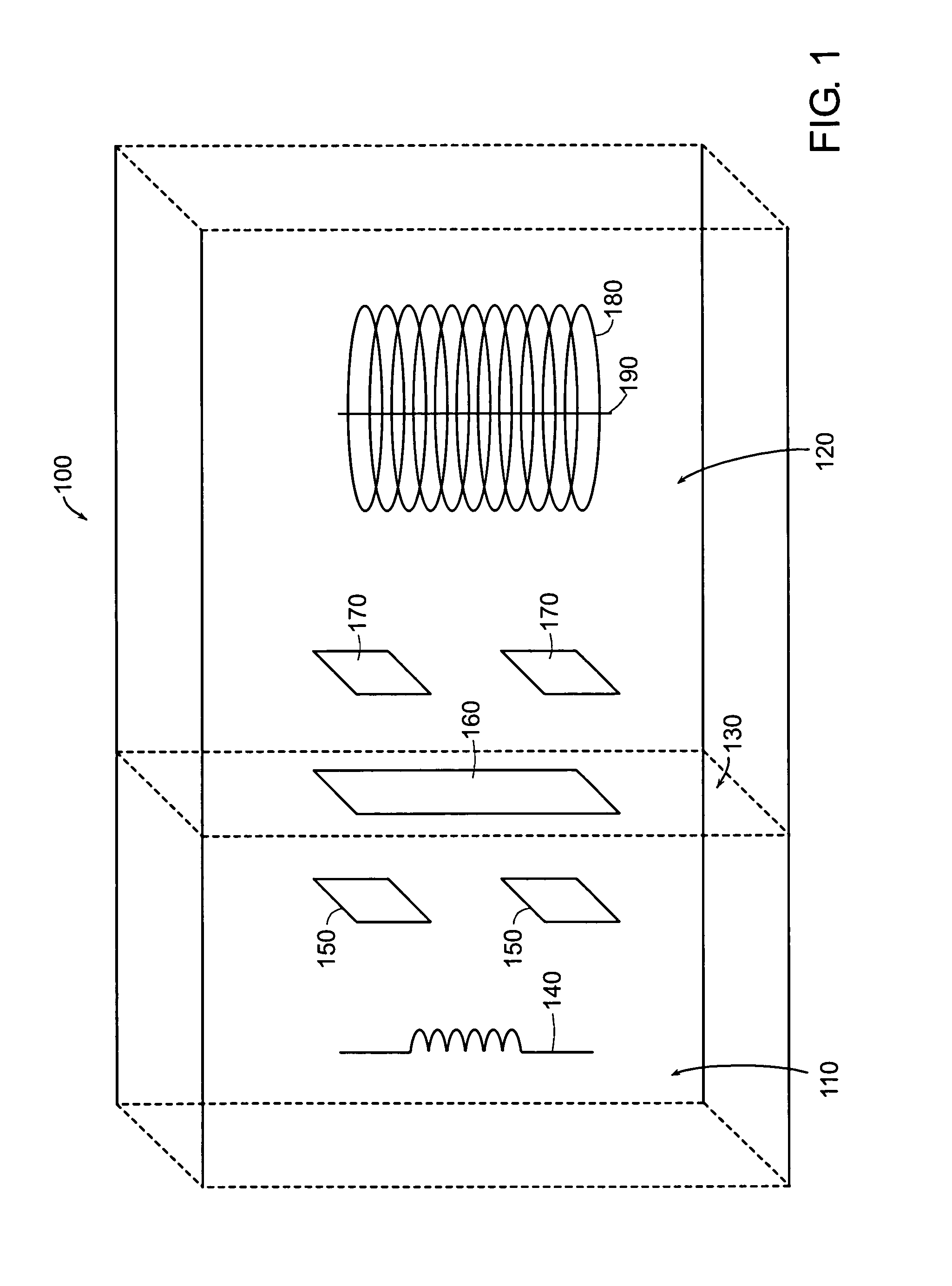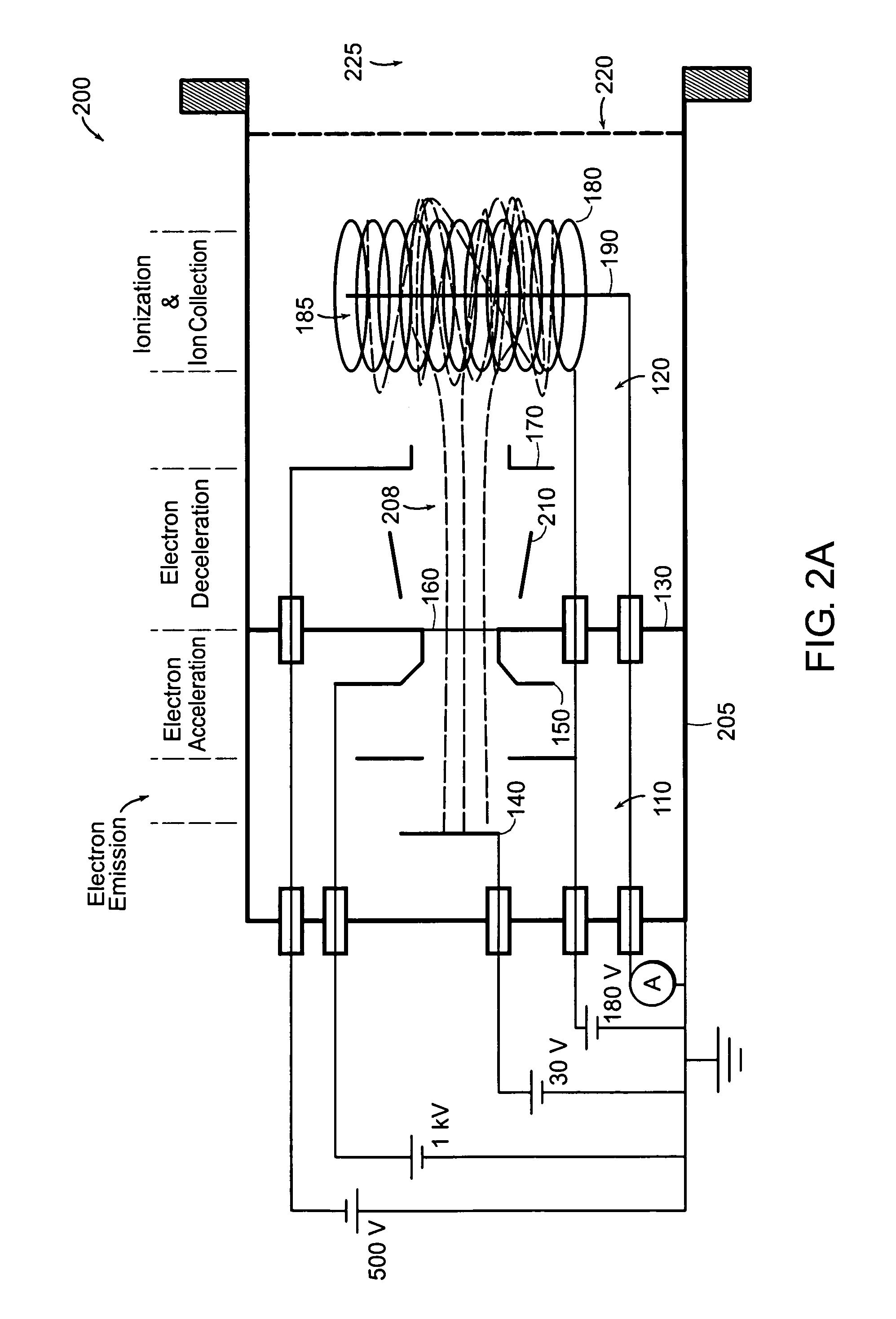Ionization gauge
a technology of ionizing gauges and gauges, which is applied in the direction of vacuum gauges, fluid pressure measurement, instruments, etc., can solve the problems of reducing the emission characteristics of electron sources, reducing the number of electrons generated, and reducing the operational life, so as to reduce the number of electrons and reduce the operational life
- Summary
- Abstract
- Description
- Claims
- Application Information
AI Technical Summary
Benefits of technology
Problems solved by technology
Method used
Image
Examples
Embodiment Construction
[0015]A description of preferred embodiments of the invention follows.
[0016]Generally, as shown in FIG. 1, one ionization gauge 100 of the present invention has an isolation chamber 110 and a measurement chamber 120. The isolation chamber contains at least one electron source 140 and at least one acceleration electrode 150. The measurement chamber 120 contains at least one deceleration electrode 170, an anode 180, and at least one collector electrode 190. The two chambers 110, 120 are separated by an isolation material 130 which prevents molecules and atoms of gas within the measurement chamber 120 from entering the isolation chamber 110 and degrading the electron source(s) 140. The isolation material 130 has an electron window 160 which allows electrons to be transmitted from the isolation chamber 110 into the measurement chamber 120. Although the ionization gauge 100 is shown with an anode 180 and collector electrode 190, these components are not needed in all embodiments of the i...
PUM
| Property | Measurement | Unit |
|---|---|---|
| electric potential | aaaaa | aaaaa |
| electric potential | aaaaa | aaaaa |
| energy | aaaaa | aaaaa |
Abstract
Description
Claims
Application Information
 Login to View More
Login to View More - R&D
- Intellectual Property
- Life Sciences
- Materials
- Tech Scout
- Unparalleled Data Quality
- Higher Quality Content
- 60% Fewer Hallucinations
Browse by: Latest US Patents, China's latest patents, Technical Efficacy Thesaurus, Application Domain, Technology Topic, Popular Technical Reports.
© 2025 PatSnap. All rights reserved.Legal|Privacy policy|Modern Slavery Act Transparency Statement|Sitemap|About US| Contact US: help@patsnap.com



